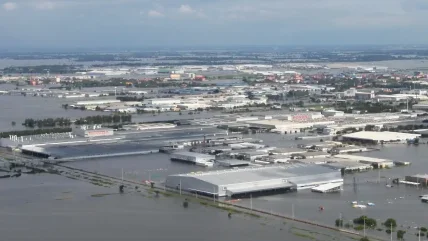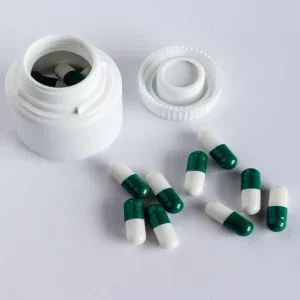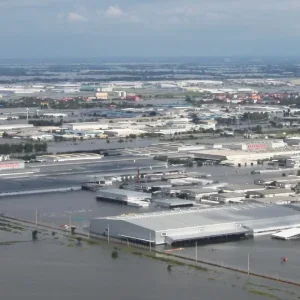
Introduction
In recent years, extreme weather events have become more frequent and severe, with significant implications for various industries. The pharmaceutical industry, known for its critical role in healthcare, is no exception. These events not only disrupt supply chains and operations, but also pose challenges in drug production, storage, and distribution. This article explores the impact of extreme weather on the pharmaceutical industry and the strategies companies are employing to mitigate these risks.
The growing frequency of extreme weather events
The increasing frequency of extreme weather events such as hurricanes, floods, heat waves, and wildfires can be attributed to climate change. According to the Intergovernmental Panel on Climate Change (IPCC), there has been a marked increase in the intensity and frequency of such events over the past few decades. For the pharmaceutical industry, these changes present significant challenges, from direct physical damage to manufacturing facilities to disruptions in supply chains and logistics.
Impact on pharmaceutical supply chains
The pharmaceutical supply chain is complex and global, involving the transportation of raw materials, active pharmaceutical ingredients (APIs), and finished products across various regions. Extreme weather events can disrupt this intricate network in multiple ways:
- Transportation Delays and Disruptions: Hurricanes and floods can damage infrastructure such as roads, ports, and airports, leading to significant delays in the transportation of pharmaceutical products. For instance, Hurricane Maria in 2017 severely impacted Puerto Rico, a major hub for pharmaceutical manufacturing, causing widespread disruptions in the supply of critical drugs.
- Damage to Manufacturing Facilities: Extreme weather can cause physical damage to manufacturing plants and warehouses. Flooding can destroy raw materials and finished products, while hurricanes and tornadoes can cause structural damage. This not only halts production but also results in financial losses.
- Temperature-Sensitive Products: Many pharmaceutical products, including vaccines and biologics, require strict temperature controls. Heatwaves or power outages caused by storms can compromise the integrity of these products, leading to spoilage and wastage. The cost of such losses can be substantial, given the high value of these products.
Mitigation strategies and resilience building
To address the challenges posed by extreme weather events, pharmaceutical companies are adopting various strategies to build resilience and ensure continuity of supply. These include:
- Diversifying Supply Chains: Companies are increasingly diversifying their supply chains to reduce reliance on a single geographic location. By sourcing raw materials and APIs from multiple regions, they can minimise the risk of disruption due to localised extreme weather events.
- Investing in Infrastructure: Strengthening the physical infrastructure of manufacturing facilities and warehouses is crucial. This includes building facilities that can withstand extreme weather conditions, implementing robust flood defence systems, and ensuring backup power supplies to maintain temperature control for sensitive products.
- Advanced Weather Forecasting and Monitoring: Leveraging advanced weather forecasting and monitoring technologies allows companies to anticipate and prepare for extreme weather events. Real-time data and predictive analytics can help in making informed decisions, such as adjusting production schedules or rerouting shipments to avoid affected areas.
- Collaborative Efforts: Collaboration with governments, industry bodies, and other stakeholders is essential. For example, partnerships with logistics companies can ensure the availability of alternative transportation routes during emergencies. Engaging with local communities can also enhance response efforts and support recovery.
Regulatory considerations and compliance
The pharmaceutical industry is heavily regulated, with stringent guidelines to ensure the safety, efficacy, and quality of products. Extreme weather events can complicate compliance with these regulations. Regulatory bodies such as the Food and Drug Administration (FDA) and the European Medicines Agency (EMA) provide guidelines for maintaining compliance during emergencies:
- Good Distribution Practice (GDP): GDP guidelines require that products are stored and transported under conditions that maintain their quality. During extreme weather events, companies must ensure that these conditions are met, even if it means activating contingency plans such as using alternative storage facilities or transportation methods.
- Good Manufacturing Practice (GMP): GMP guidelines ensure that products are consistently produced and controlled according to quality standards. In the event of manufacturing disruptions, companies must have robust plans to resume operations while maintaining compliance. This includes thorough documentation and validation of any changes in the production process.
- Emergency Use Authorisations (EUAs): In some cases, regulatory bodies may issue EUAs to facilitate the availability of critical drugs during emergencies. This was seen during the COVID-19 pandemic, where EUAs allowed for the rapid deployment of vaccines and treatments. However, companies must ensure that these products still meet safety and efficacy standards.
Case Studies: learning from experience
Examining past incidents of extreme weather events can provide valuable insights into how the pharmaceutical industry can better prepare and respond. Here are two notable examples:
- Hurricane Maria (2017): Puerto Rico, home to a significant number of pharmaceutical manufacturing facilities, was devastated by Hurricane Maria. The storm caused extensive damage to infrastructure, leading to prolonged power outages and disruptions in the supply of critical drugs. Companies such as Johnson & Johnson and Pfizer had to implement extensive recovery plans, including flying in generators and re-routing supply chains. The event underscored the importance of having robust disaster recovery plans and highlighted vulnerabilities in the supply chain that needed to be addressed.
- Flooding in Thailand (2011): Severe flooding in Thailand, a key region for the production of APIs and other raw materials, disrupted global supply chains for several months. Pharmaceutical companies faced shortages of essential ingredients, leading to delays in drug production. In response, many companies began to diversify their supplier base and invest in flood-resistant infrastructure. The incident also spurred greater collaboration between the industry and regulatory bodies to develop more resilient supply chains.
Future Outlook: preparing for an uncertain climate
As climate change continues to drive the occurrence of extreme weather events, the pharmaceutical industry must remain vigilant and proactive. Future strategies to enhance resilience may include:
- Sustainable Practices: Adopting sustainable practices can help mitigate the impact of climate change. This includes reducing carbon footprints, investing in renewable energy sources, and implementing eco-friendly manufacturing processes. By addressing the root causes of climate change, the industry can contribute to reducing the frequency and severity of extreme weather events.
- Innovative Technologies: Advances in technology can play a crucial role in enhancing resilience. For example, the use of blockchain technology can improve transparency and traceability in supply chains, making it easier to identify and address vulnerabilities. Similarly, the adoption of IoT devices and sensors can enhance real-time monitoring of environmental conditions, ensuring that products remain within required parameters.
- Policy Advocacy: Engaging in policy advocacy can help shape regulations and standards that support industry resilience. By working with governments and regulatory bodies, the pharmaceutical industry can promote policies that facilitate rapid response and recovery during extreme weather events. This includes advocating for infrastructure investments, streamlined regulatory processes, and incentives for adopting resilient practices.
Conclusion
Extreme weather events pose significant challenges to the pharmaceutical industry, affecting supply chains, manufacturing processes, and regulatory compliance. However, by adopting a proactive approach and leveraging advanced technologies, companies can build resilience and ensure the continuity of supply. Collaboration with stakeholders, sustainable practices, and policy advocacy will also play a crucial role in addressing the impact of these events. As the frequency and severity of extreme weather events continue to rise, the pharmaceutical industry must remain adaptable and prepared to navigate the uncertainties of a changing climate.






